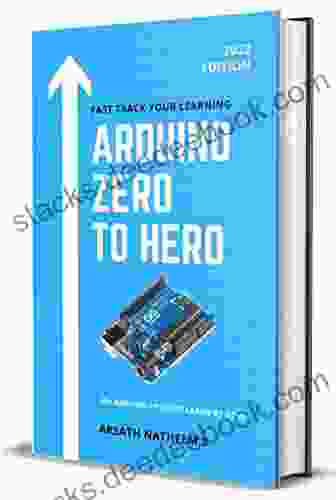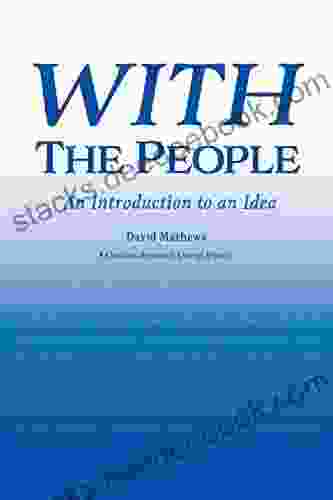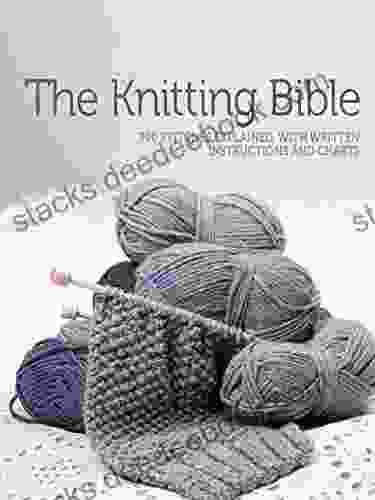Zero to Hero: A Comprehensive Guide to Mastering Arduino

Arduino is an open-source electronics platform based on easy-to-use hardware and software. It is designed to make the process of building electronic projects more accessible to people of all ages and skill levels. This guide will provide a comprehensive overview of Arduino, from its basic principles to advanced concepts. By the end of this guide, you will have a solid foundation in Arduino and be well-equipped to create your own electronic projects.
Arduino is a microcontroller board that allows you to connect various electronic components and sensors. It simplifies the process of creating electronic projects by providing a user-friendly interface and pre-written code libraries.
There are many different Arduino boards available, each with its own unique features and capabilities. When choosing an Arduino board, consider the following factors:
4 out of 5
| Language | : | English |
| File size | : | 36185 KB |
| Text-to-Speech | : | Enabled |
| Enhanced typesetting | : | Enabled |
| X-Ray for textbooks | : | Enabled |
| Word Wise | : | Enabled |
| Print length | : | 339 pages |
| Lending | : | Enabled |
| Screen Reader | : | Supported |
- Number of input/output (I/O) pins: The number of I/O pins determines how many sensors and actuators you can connect to the Arduino.
- Processor speed: The processor speed determines the speed at which the Arduino can execute code.
- Memory capacity: The memory capacity determines how much code and data the Arduino can store.
- Connectivity options: Some Arduino boards have built-in connectivity options such as Wi-Fi or Bluetooth.
The Arduino software, known as the Arduino Integrated Development Environment (IDE),provides a user-friendly interface for writing and uploading code to your Arduino board. To install the Arduino software:
- Visit the Arduino website (https://www.arduino.cc) and download the latest version of the IDE.
- Install the Arduino IDE on your computer.
- Connect your Arduino board to your computer using a USB cable.
- Digital inputs and outputs: Digital inputs and outputs can be set to either a high or low state. They are commonly used to connect to switches, buttons, and LEDs.
- Analog inputs and outputs: Analog inputs and outputs can represent a range of values. They are commonly used to connect to sensors and actuators.
Arduino boards can be powered using a variety of methods, including:
- USB power: Arduino boards can be powered by connecting them to a computer using a USB cable.
- External power supply: Arduino boards can be powered by an external power supply, such as a battery or wall adapter.
Grounding an Arduino is important to ensure that all components are properly connected and functioning correctly. The ground pin on an Arduino board is typically labeled "GND."
An Arduino program consists of two main functions:
- setup(): This function is executed once when the Arduino board is powered on or reset. It is used to initialize the Arduino and set up any necessary variables.
- loop(): This function is executed repeatedly after the setup() function has finished. It contains the main code for your project.
Arduino code uses a C-like syntax. Some of the basic syntax elements include:
- Variables: Variables are used to store data and can be declared using the "int," "float," and "char" types.
- Conditionals: Conditionals are used to control the flow of your program and can be used with the "if," "else," and "switch" statements.
- Loops: Loops are used to repeat a block of code multiple times and can be used with the "for," "while," and "do-while" statements.
Arduino provides a number of built-in functions that can be used to perform common tasks. Some of the most common built-in functions include:
- digitalWrite(): Sets the value of a digital pin to either HIGH or LOW.
- analogRead(): Reads the value of an analog input pin.
- delay(): Delays the execution of your program for a specified amount of time.
Arduino boards can be used to interface with a wide variety of sensors and actuators. Some of the most common sensors and actuators include:
- Temperature sensors: Temperature sensors can be used to measure the temperature of an environment.
- Light sensors: Light sensors can be used to measure the intensity of light.
- Motion sensors: Motion sensors can be used to detect movement.
- Servos: Servos are small motors that can be used to control the position of an object.
- Stepper motors: Stepper motors are motors that can be used to move objects in precise increments.
Arduino boards can communicate with other devices using a variety of communication protocols. Some of the most common communication protocols include:
- Serial communication: Serial communication is a simple protocol that allows two devices to communicate over a single wire.
- I2C communication: I2C communication is a protocol that allows multiple devices to communicate over a two-wire bus.
- SPI communication: SPI communication is a protocol that allows multiple devices to communicate over a three-wire bus.
Arduino boards can be used to interface with the cloud using a variety of methods. Some of the most common methods include:
- Wi-Fi: Arduino boards can be connected to the internet using a Wi-Fi module.
- Bluetooth: Arduino boards can be connected to other devices using a Bluetooth module.
- Cellular: Arduino boards can be connected to the internet using a cellular module.
When building Arduino projects, it is common to encounter problems. Some of the most common problems include:
- Hardware problems: Hardware problems can be caused by faulty components or incorrect connections.
- Software problems: Software problems can be caused by errors in your code or incorrect use of the Arduino libraries.
- Grounding problems: Grounding problems can occur when the Arduino is not properly grounded.
If you are having problems with your Arduino project, it is important to troubleshoot the problem systematically. Start by checking for any obvious hardware problems, such as loose connections or faulty components. If you cannot find any hardware problems, then you should check for any software problems. Finally, if you cannot find any software problems, then you should check for any grounding problems.
Arduino is a powerful and versatile platform that can be used to create a wide variety of electronic projects. This guide has provided a comprehensive overview of Arduino, from its basic principles to advanced concepts. By following the steps outlined in this guide, you can gain a solid foundation in Arduino and start creating your own electronic projects.
4 out of 5
| Language | : | English |
| File size | : | 36185 KB |
| Text-to-Speech | : | Enabled |
| Enhanced typesetting | : | Enabled |
| X-Ray for textbooks | : | Enabled |
| Word Wise | : | Enabled |
| Print length | : | 339 pages |
| Lending | : | Enabled |
| Screen Reader | : | Supported |
Do you want to contribute by writing guest posts on this blog?
Please contact us and send us a resume of previous articles that you have written.
 Book
Book Novel
Novel Chapter
Chapter Text
Text Story
Story Reader
Reader Library
Library Paperback
Paperback E-book
E-book Sentence
Sentence Bookmark
Bookmark Shelf
Shelf Foreword
Foreword Preface
Preface Footnote
Footnote Codex
Codex Tome
Tome Library card
Library card Narrative
Narrative Biography
Biography Memoir
Memoir Reference
Reference Narrator
Narrator Resolution
Resolution Catalog
Catalog Stacks
Stacks Periodicals
Periodicals Research
Research Scholarly
Scholarly Lending
Lending Reserve
Reserve Reading Room
Reading Room Rare Books
Rare Books Interlibrary
Interlibrary Literacy
Literacy Study Group
Study Group Thesis
Thesis Reading List
Reading List Book Club
Book Club Theory
Theory Adrian Sandmeier
Adrian Sandmeier Adrian Urban
Adrian Urban John Gastil
John Gastil Elly Sheykhet
Elly Sheykhet Maxime J Durand
Maxime J Durand Richard Dinnick
Richard Dinnick Jutta Profijt
Jutta Profijt Eli Boschetto
Eli Boschetto Jim Carl
Jim Carl Louis Eisenstein
Louis Eisenstein Mark Bego
Mark Bego Deborah Paredez
Deborah Paredez Mauro Voerzio
Mauro Voerzio Antonio Lacarte
Antonio Lacarte Elisa Leonelli
Elisa Leonelli Adrian Morales
Adrian Morales Gavin Reid
Gavin Reid Diana Dillaway
Diana Dillaway Christine R Finnan
Christine R Finnan Jen Nelles
Jen Nelles
Light bulbAdvertise smarter! Our strategic ad space ensures maximum exposure. Reserve your spot today!

 Justin BellThe Pink Princess Cookbook by Barbara Beery: A Culinary Adventure for Young...
Justin BellThe Pink Princess Cookbook by Barbara Beery: A Culinary Adventure for Young...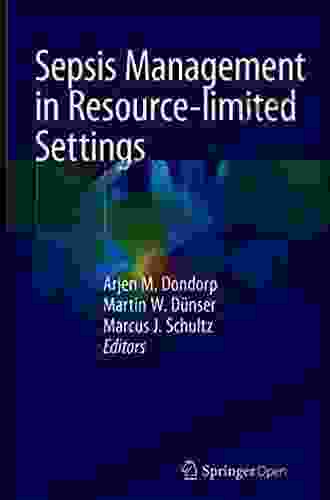
 Roland HayesGuidelines for Effective Resource Management in Resource-Limited Healthcare...
Roland HayesGuidelines for Effective Resource Management in Resource-Limited Healthcare... George MartinFollow ·4.3k
George MartinFollow ·4.3k Steve CarterFollow ·8.4k
Steve CarterFollow ·8.4k Winston HayesFollow ·19.8k
Winston HayesFollow ·19.8k Yasunari KawabataFollow ·15.5k
Yasunari KawabataFollow ·15.5k Phil FosterFollow ·9.9k
Phil FosterFollow ·9.9k Chandler WardFollow ·19.9k
Chandler WardFollow ·19.9k George OrwellFollow ·10.3k
George OrwellFollow ·10.3k Craig BlairFollow ·15.9k
Craig BlairFollow ·15.9k
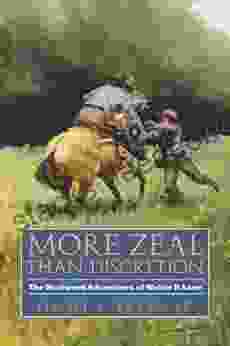
 Amir Simmons
Amir SimmonsMore Zeal Than Discretion: A Closer Look at the Risks and...
Enthusiasm is often seen as a positive...
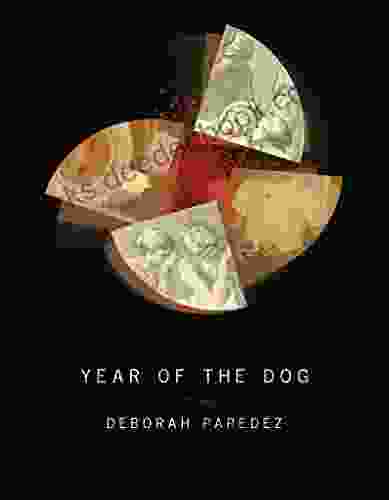
 Wayne Carter
Wayne CarterYear of the Dog: American Poets Continuum 178
Year of the Dog is a...
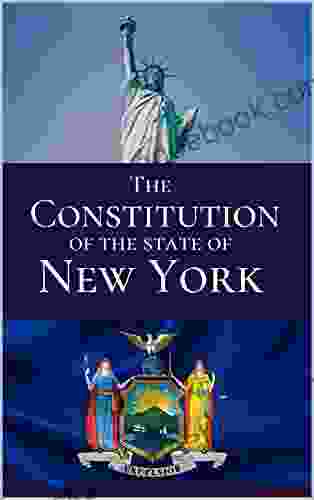
 David Foster Wallace
David Foster WallaceThe Constitution of the State of New York: A...
The Constitution of the...

 Harvey Bell
Harvey BellSmall Cetaceans of Japan: Exploitation and Biology
Small cetaceans, including...

 Blake Bell
Blake BellEffortless Elegance: A Comprehensive Guide to Captivating...
In the realm of crocheting,...
4 out of 5
| Language | : | English |
| File size | : | 36185 KB |
| Text-to-Speech | : | Enabled |
| Enhanced typesetting | : | Enabled |
| X-Ray for textbooks | : | Enabled |
| Word Wise | : | Enabled |
| Print length | : | 339 pages |
| Lending | : | Enabled |
| Screen Reader | : | Supported |


